【温馨提示】 购买原稿文件请充值后自助下载。
以下预览截图到的都有源文件,图纸是CAD,文档是WORD,下载后即可获得。
预览截图请勿抄袭,原稿文件完整清晰,无水印,可编辑。
有疑问可以咨询QQ:414951605或1304139763
目录
1 前言 1
1.1 课题意义 1
1.2 国内外发展现状 1
1.3 设计前提及主要问题 2
1.4 解决的主要问题和总体设计思路 3
1.5 预期成果和实际价值 3
2 总体方案论证 4
3 具体设计说明 5
3.1 塑件测绘 5
3.2 塑件三维实体造型 5
3.3 材料的选择 6
3.3.1制品材料 6
3.3.2模具材料的选择 6
3.4 注塑机的校核 7
3.4.1注塑设备的确定 7
3.4.2注塑机有关工艺参数的校核 7
3.5 分型面的设计 9
3.6 浇注系统设计 10
3.6.1浇注系统的设计原则 10
3.6.2主流道的设计 10
3.6.3分流道及其平衡布置 11
3.6.4浇口的设计 11
3.6.5冷料穴的设计 12
3.7 冷却系统的设计 12
3.7.1 在设计冷却系统时,应从多方面考虑: 13
3.7.2冷却计算 13
3.7.3冷却水道在定模中的位置 13
3.8 顶出系统的设计 14
3.8.1推出机构设计 14
3.8.2顶出行程 15
3.8.3复位杆 15
3.8.4顶杆的形状与尺寸选择 15
3.8.5导向装置位置的布置 15
3.8.6浇注系统零件设计 16
3.9侧向分型与抽芯机构的设计 16
3.9.1侧向抽芯机构设计应注意如下要点: 16
3.9.2抽芯距、抽拔力与斜导柱的计算 17
3.9.3斜导柱的设计 17
3.9.4滑块的设计 17
3.10 模架设计 18
3.11 凸凹模的造型 19
3.12 型腔加工工艺分析及加工仿真 22
3.12.1零件的工艺性审查 22
3.12.2毛坯选择 22
3.12.3基准选择 22
3.12.4拟定加工方案 22
3.12.5型腔数控仿真加工 22
4 结论 25
参考文献 26
致 谢 27
附录 28
摘 要 :本课题是关于手机外壳模具的设计,主要是手机外壳注射成型模的结构设计和模具加工制造。手机的形状较为复杂,所以模具设计中要考虑的因素有很多,除考虑它的出模、分型面,还需考虑它成型的质量,表面光洁度等。所以我们设计应认真分析塑料制品的结构,寻求最佳的设计方案并选择成型设备的规格和型号。分型面的选择很重要,制件不是平直表面,分型面的选择既要考虑不影响制件表面的美观,又要达到结构要求。浇注系统的设计也很重要,在此次设计中我选点浇口,并设有冷料穴。拉料杆采用Z形,这就解决了制品出模的问题。编制塑件的模型成型工艺,并进一步对该注射模结构进行设计,编制该注射模主要零件的加工工艺,最后进行型腔仿真加工。
结构设计包括分型面、型腔布置、浇注系统、排气系统、加热冷却系统、侧向抽芯机构、顶出机构、脱模机构以及主要零部件的设计。模具加工制造运用PRO/E进行三维造型设计并对注塑模模具进行装配,对手机外壳注塑模具定模板型腔的加工工艺进行了分析,并利用Mastercam软件进行了仿真加工,其切削过程直观,切削参数得以体现,不合理的参数可以改进,能最大限度地降低能源和材料消耗,提高加工效率。此注射模设计的结构特点是点浇口形式的双分型面的注射模,是侧向抽芯。经生产验证,该模具结构设计巧妙、操作方面、使用寿命长、塑件达到技术要求。
关键词:模具设计:注塑模具;仿真加工;分型面
The design of the mobile shell mould And
the simulation processing of the mold cavity
Abstract: This topic is to design the mobile shell mold, which includes the structure design mould assist designing for manufacturing, and the working process of the injection mould of the front cover of the mobile shell set were introduced. Mobile shape so complicated that the mold design has a lot of factors to be considered , in addition to its ejector pin, parting surface, it needs to consider forming the quality of surface finish, and so on. Therefore, we should carefully design the structure of plastic products, find the best design options and choose the molding equipment specifications and models. It is very important, not the straight parts surface, parting surface of choice it is necessary to consider not affect parts of the surface appearance, but also to structural requirements. Pouring system design is also important in the design of the election, pin gate cold-slag well and Z-shape pin were chosen which are solved the problem of products to die. Plastic Parts of the Process model, and further injection structure of the design, preparation of the main components of the injection-processing technology, a cavity simulation final processing.
The structure design involve parting plane, cavity layout, old systems, heating cooling systems, the side core pulling mechanism structure, prop up the organization, drawing patterns and the design process of the main work pieces. The later use PRO/E to construct carries on the three dimensional modeling and to assemble the injection mould. The processing craft of the cavity of fixed plate of the base of the mobile shell are analyzed, and the simulation process are carry out with the software of Mastercam,which can observe the geometric figure of the process of cutting very visually, the machine parameters users setting have been fully reflected to improve the unreasonable parameters, to minimize consumption of energy and materials and to improve processing efficiency. The structure characteristic of this injection mould was a two-parting surface , and was a side core pulling mechanism. The mould was proved to be a clever design by production practice , the mould could be operated easily , the service life of the mould was long and the plastics parts produced by the mould could meet the technical requirement.
Key words: mold design; injection mould; processing simulation; parting plane;
1 前言
1.1 课题意义
模具是工业生产的重要工艺设备,它被用来成型具有一定形状和尺寸的各种制品。在各种材料加工工业中广泛地使用各种模具,每种材料成型模具按成型方法不同又分为若干种类型。其中塑料模具的发展是随着塑料工业的发展而发展的。近年来,人们对各种设备和用品轻量化要求越来越高,这就为塑料制品提供了更为广阔的市场。塑料制品要发展,必然要求塑料模具随之发展。模具作为发展新产品的重要装备,不仅市场需要量大,而且技术含量高。对于模具的精度、寿命、交货期等要求也非常务实,模具行业的竞争也非常激烈。本专业是机械设计制造及其自动化,对制品的模具设计使得我们把以前所学的相关知识都运用到其中了,对模具设计手册、机械设计手册、模具制造工艺、中国模具工程大典的查找使得我对设计有了更进一步的认识和了解,能熟练运用PRP/E软件进行制品的造型和模具的装配,还有Mastercam型腔的仿真加工都得到了掌握。
1.2 国内外发展现状
近年来,中国塑料模具制造水平已有较大提高。大型塑料模具已能生产单套重量达到50t以上的注塑模,精密塑料模具的精度已达到2μm,制件精度很高的小模数齿轮模具及达到高光学要求的车灯模具等也已能生产,多腔塑料模具已能生产一模7800腔的塑封模,高速模具方面已能生产挤出速度达6m/min以上的高速塑料异型材挤出模具及主型材双腔共挤、双色共挤、软硬共挤、后共挤、再生料共挤出。
在生产手段上,模具企业设备数控化率已有较大提高,CAD/CAE/CAM技术的应用面已大为扩展,高速加工及RP/RT等先进技术的采用已越来越多,模具标准件使用覆盖率及模具商品化率都有较大幅度的提高,热流道模具的比例也有较大提高。另外,三资企业的蓬勃发展进一步促进了塑料模具设计制造水平及企业管理水平的提高,有些企业已实现信息化管理和全数字化无图制造。
在制造技术方面,CAD/CAM/CAE技术的应用水平上了一个新台阶,实现了CAD/CAM的集成,并能支持CAE技术对成型过程,如充模和冷却等进行计算机模拟,取得了一定的技术经济效益,促进和推动了我国模具CAD/CAM技术的发展。近年来,我国自主开发的塑料模CAD/CAM系统有了很大发展,主要有北航华正软件工程研究所开发的CAXA系统、华中理工大学开发的注塑模HSC5.0系统及CAE软件等,这些软件具有适应国内模具的具体情况、能在微机上应用且价格低等特点,为进一步普及模具CAD/CAM技术创造了良好条件。
模具市场的总体趋势是平稳向上的,在未来的模具市场中,塑料模具发展速度将高于其它模具,在模具行业中的比例将逐步提高。随着塑料工业的不断发展,对塑料模具提出越来越高的要求是正常的,因此,精密、大型、复杂、长寿命塑料模具的发展将高于总量发展速度。
国外近年来发展的速度也比较快,在高速铣削加工方面,机床主轴转速可达40000r/min -100000r/min,快速进给速度可达到30m/min-40m/min,加速度可达19,换刀时间可提高到1s~2s。这样就大幅度提高了加工效率,并可获得Ra≤0.08μm的加工表面粗糙度。另外,还可加工硬度达60HRC 的模块,形成了对电火花成形加工的挑战。高速切削加工与传统切削加工相比还具有温升低(加工工件只升高3℃)、热变形小等优点。目前它已向更高的敏捷化、智能化、集成化方向发展。高速铣削必须与相应的软件、加工工艺、刀具及其夹紧头相配合。
国外在模具生产中,计算机辅助设计与辅助制造(CAD/CAM)技术已得到十分成功的应用。三维造型和型腔的数控加工都是由计算机辅助软件完成的,它大幅度的缩短了模具的生产周期,提高工作效率。
德、美、日、法、意等工业发达国家在模具设计制造领域仍处于国际领先水平,他们的一些先进的模具方面的技术被许多发展中国家,甚至是其它发达国家学习采用。亚洲以日本和韩国模具技术水平最高,其它国家与之还有较大的差距,不过他们也正在以惊人的速度发展着,国家之间的交流会使之发展更快。
1.3 设计前提及主要问题
本课题为手机外壳注塑模具设计及型腔仿真加工,结合生产实际,进行手机前盖制品测绘、模具设计、工艺分析及数控编程及加工仿真。设计原始数据: 1)制品的尺寸精度要求:长度方向小于0.50,厚度方向小于0.10;2)制品材料:ABS;3)制品表面粗糙度:不低于实物表面;4)制品生产批量:5万;5)制品其他要求:符合设计规范。
运用三维绘图软件Pro/E进行制品的模型构造。PRO/E是一个高效的三维机械设计工具,可绘制任意复杂形状的零件。本设计中主要是用PRO/E生成平面。其方法有:拉伸、旋转、镜像等。它既能作为高性能系统独立使用,又能与其它实体建模模块结合起来使用,它支持GB、ANSI、ISO和JIS等标准。它的功能很强大,可以应用与工业设计、机械设计、功能仿真、制造和数据管理等领域,涉及从设计到生产的全过程。



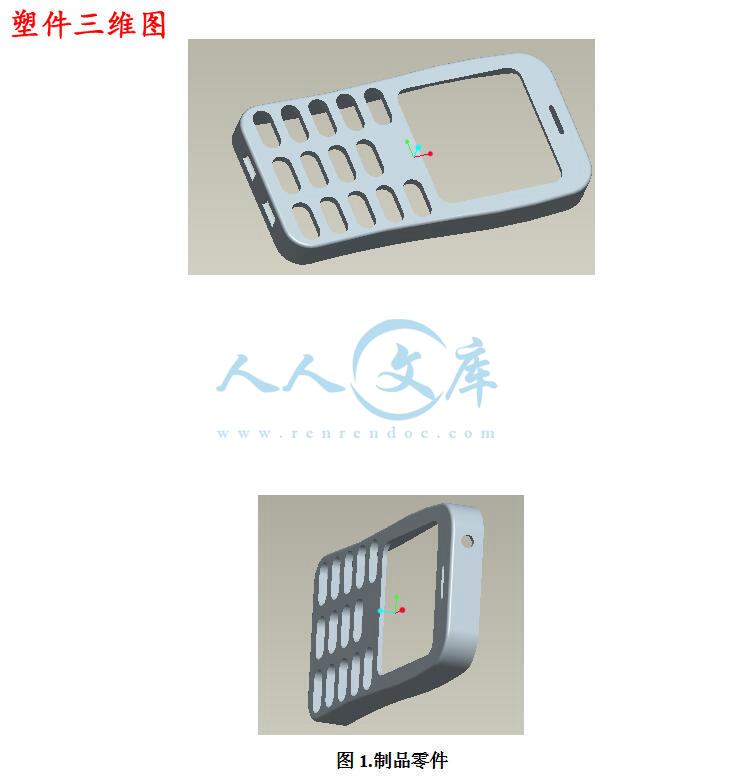

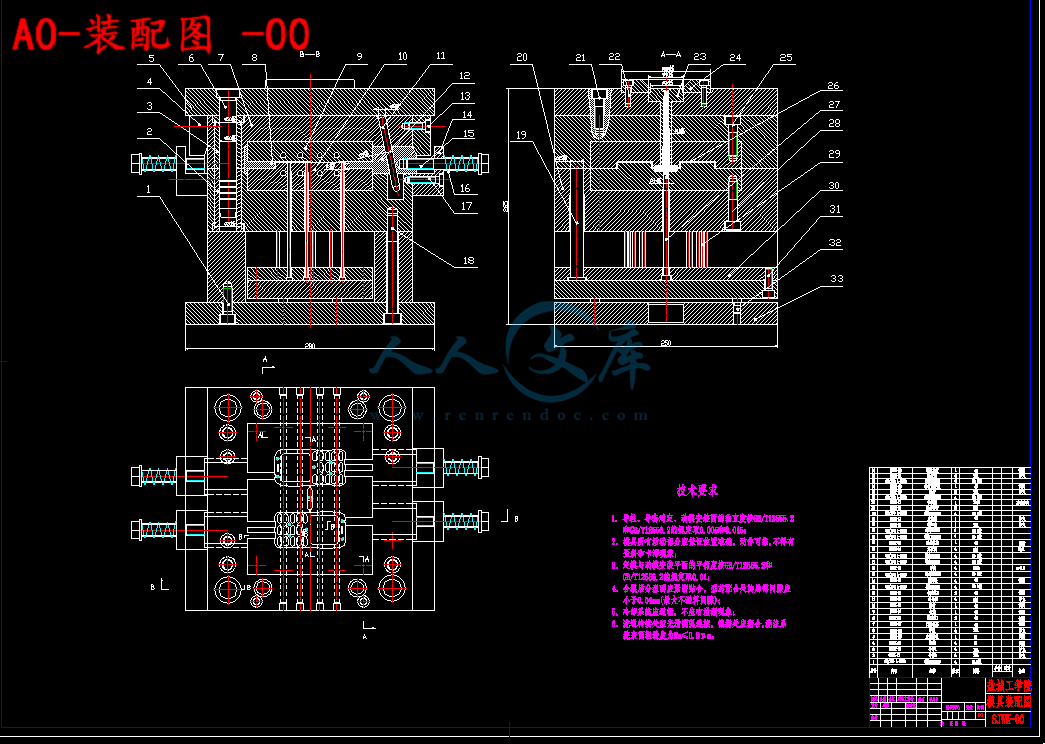






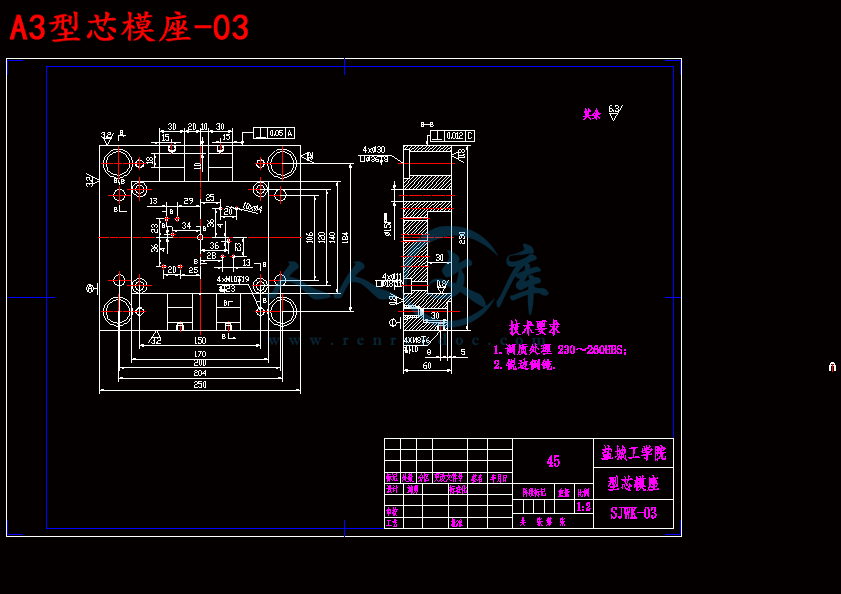

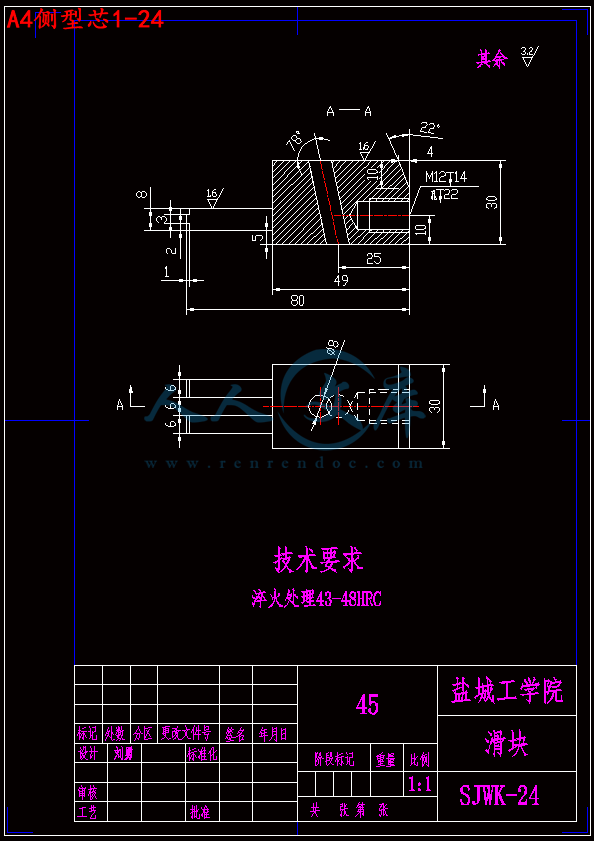











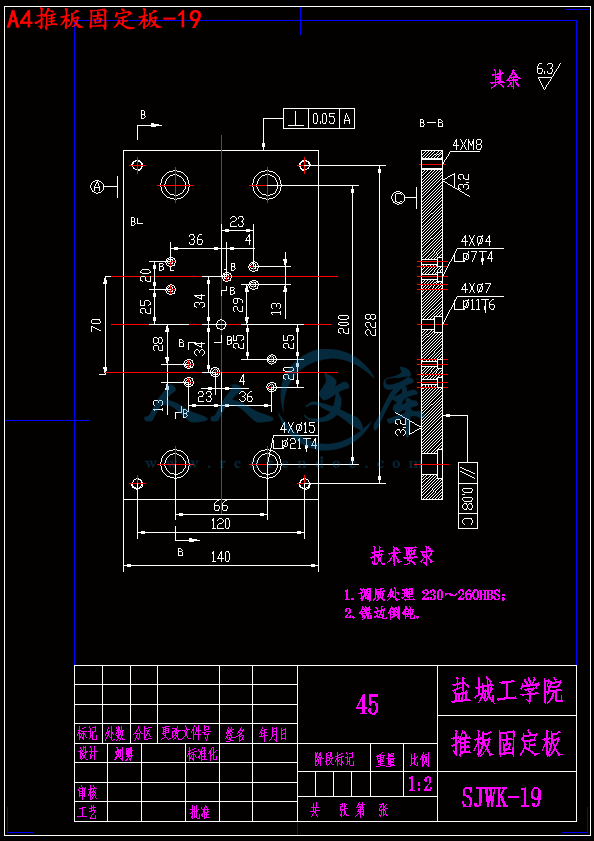



 川公网安备: 51019002004831号
川公网安备: 51019002004831号